A short telephoto lens has long been a staple piece of gear in my camera bag. The third lens I ever bought was a Nikon 105mm f/2.5 manual lens; when that got stolen, I bought another. That one got stolen too, so I bought a third, which I still have. Eventually, I picked up a Nikon 85mm f/1.8D lens, which has become one of my all time favorite lenses. Canon also has an EF 85mm f/1.8 lens. For my Fujifilm X Series cameras, I use the incredibly sharp and fast XF 56mm f/1.2, and the ultra compact, weather sealed XF50mm f/2. Both of these lenses are super sharp and lots of fun to use!
In my mind, short telephotos rule. They’re faster, lighter and more compact than most zooms, which makes them useful for a wide variety of photography situations. And they do an excellent job of isolating your subject matter against the background, which helps make your images pop.
Here are a few ways that I like to use them in my photography. Hopefully these examples will inspire you to rush out, get a short tele and run wild with their great versatility.
1. Portraits
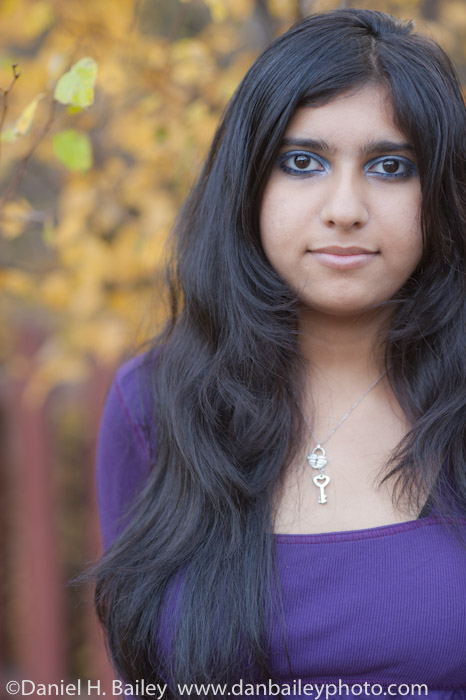
Short telephotos are the number one choice for most portrait photographers. The slight compression effect that a lens of this range gives the human face leads to an extremely pleasing look.
Essentially, it flattens the features slightly and brings the ears a bit closer to the rest of the face. It’s a subtle effect, but it’s one that professionals use to their advantage when shooting people.
The Nikon 105mm and the Canon 100mm have long been #1 lens choice for professional portrait photographers. The Nikon AF Micro 105mm f/2.8 ED-IF AF-S VR is the current model in the Nikon family. With the ability to do extreme micro closeup, it’s truly an awesome lens.
They also have the Nikon AF 85mm f/1.4 IF Autofocus lens. Even faster than the Nikon 85mm f1.8, it’s an extremely sharp lens and great for shooting inside, or when weight isn’t an issue.
For the more budget conscious shooter, there’s the Sigma 105mm f/2.8 EX DG Macro lens for Nikon AF Cameras. It’s considerably less expensive than the Nikon 105mm and it’s generally rated 4 out of 5 stars from most users who take the time to review it.
Canon actually makes three lenses in that range, the Canon EF 100mm f/2.8 Macro IS USM lens is their top of the line pro short telephoto. It’s consistently rated as one of the top Canon lenses.
They also have two less expensive 100mm lenses, the Canon Telephoto EF 100mm f/2.8 Macro and the slightly faster, non-macro version, the Canon Telephoto EF 100mm f/2.0 USM Autofocus lens.
2. Travel
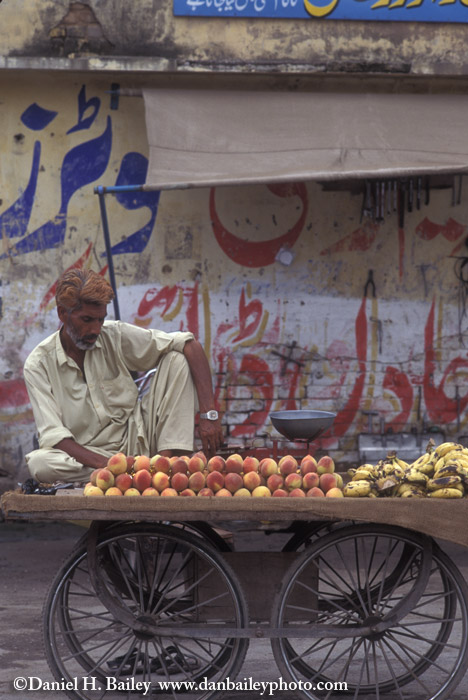
The short telephoto is an awesome travel lens. In fact, I consider it the quintessential “across the street lens,” because it allows you to capture a very nice candid scene from a safe, unobtrusive distance.
Often times the subject won’t even know you’re taking the shot. And, since they’re small and compact, compared to some larger zooms, you’ll blend in with the crowd more than you would if you had a bigger zoom attached to your camera.
These days I never go anywhere without my Nikon 85mm f1.8. Even if I’m taking along a bigger zoom, the 85mm always lives in my camera bag, because its speed and compact size gives me plenty of options.
They’re great for shooting cultural scenes, architectural details, interiors, and for isolating people in their environment. And since they’re so fast, they’re often great lenses for shooting inside where you’re often faced with difficult lighting options.
Whereas I used to consider myself strictly an “outdoor photographer,” these days, armed with my Nikon D700, its low light sensitivity and my 85mm f/1.8 lens, I’ll shoot anything with confidence, inside or out. This is also true with the Fuji gear. It has excellent sensitivity for shooting in low light, and even using the stock XF 18-55mm lens on the X-T1, and X-E1 and 2 give excellent results.
3. Landscapes and Nature
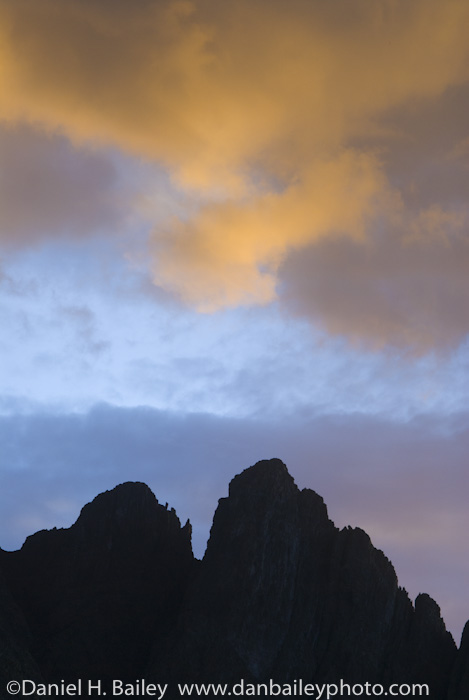 That’s right, you’ve seen this shot before. It’s the cover of my eBook, Making The Image.
That’s right, you’ve seen this shot before. It’s the cover of my eBook, Making The Image.
I love using short telephoto lenses for shooting landscapes and nature. They allow you to isolate specific areas of the world at a workable distance.
You can put together two or three simple subject elements and create a moving composition without having to worry about showing too much other stuff which might make the image too busy.
You also don’t have the danger of composing too tightly as you might be tempted to do with a longer telephoto or zoom lens.
I’ve shot some my favorite landscape photos with short teles. And the close focusing distance of a lens like an 85mm or a 100mm lens makes it ideal for shooting semi-closeups of nature from a tripod.
I’ll say it again, I never go anywhere without my one of these lenses in my bag or backpack. Neither should you.
4. Sports, Action and Adventure
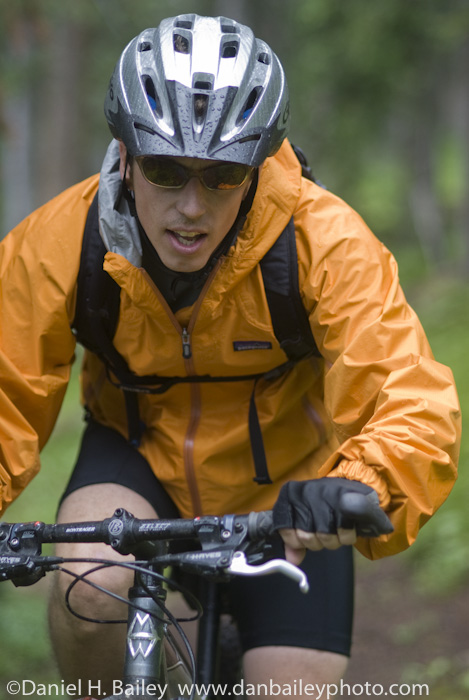
During those times when all you have room for are are a single camera body and a couple of small lenses, like when you’re out hiking, biking or skiing, take along a short tele.
They do such a great job of isolating your subjects against a soft background, a technique that makes your images pop.
And, of course, they won’t weigh you down. Galen Rowell used to say that his favorite lenses for going light and fast were his 24mm and his 85mm.
I’ve carried my 85mm lens on rock climbs, long mountain bike rides, multi-day hikes, backcountry ski excursions… like I said, I never go anywhere without my short tele.
In fact, I don’t think that there’s a trip or outdoor adventure that I’ve ever gone on where I didn’t have either my 85mm or my old 105mm lens with me.
And I don’t always use it up close to isolate the subject, sometimes I’ll use it at infinity focus to show a subject with just environment around them so that it tells the larger story without overwhelming the image with too much clutter.
This shot below of the mountain climber on El Pico de Orizaba in Mexico was shot with my old 105mm f/2.5 manual lens. To date, it’s one of my biggest selling images.
So, again- What can you do with a short telephoto lens? Everything. Get one and expand your creativity.

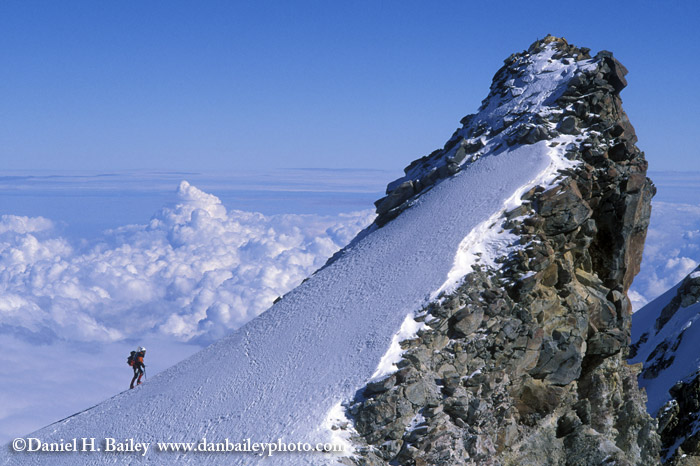
Hey Dan,
Thanks so much for this piece. I completely agree with you on the choice of lenses. I have two questions though:
1. Why not the 135mm?
2. Will you do an update or another posting on a set for Canon and Sony shooters?
Once again, great work. 85mm F/1.8 lenses focus really fast.
-Chris Gampat
Editor in Chief
The Phoblographer
Chris- Thanks for your comment. My reason for leaving out the 135mm is that I’ve never owned one, whereas I’ve owned 4 lenses in the 85-105mm range, 6 if you count my 80-200mm and the 70-210mm that I used to have. The 135mm lens also gives great short to mid telephoto results, but on a DX or crop sensor body, it starts to get a little bit long for standard portrait length. That said, it probably just comes down to personal preference.
I’ve actually included a number of Canon lens choices in that range, and I can probably come up with a list of applicable Sony lenses as well to edit in when I get a chance.
The old manual Nikkor 105mm ƒ/2.5 is one of my all-time faves. It has the creamiest bokeh. I shot a lot of Kodachrome over the years with that lens. I still have it, but don’t use it much these day as I have to rely more on auto-focus now.
“The quintessential across the street lens” I think you nailed it there!
The 85mm 1.8 is an essential bit of my kit. I do a lot of long-distance motorcycle travel where space and weight is at an absolute premium. I love how *compact* that lens is. I found it perfect for portraiture and low light situations. I shot Panamanian cockfights lit by bare bulbs, inside Mayan ruins hand-held. That 85 and a 28mm 2.8 were a surprisingly flexible kit with a crop sensor body. You can find it for around $200 used, it’s a bargain. It’s not mentioned much in the “latest is greatest” photo industry, thanks for giving it the spotlight Dan!
Anthony, thanks for your comment. I agree, even though those two lenses are not “Hot items,” they’re awesome tools to have in the camera bag. Rock solid performers and definitely lightweight, which is obviously great for motorcycle touring, bike touring, hiking, skiing, running… And now that I think about it, my very first wide angle was that Nikon 28mm f2.8 manual lens. That one got stolen too, along with my first 105mm.
Alex, I loved both of my manual Nikkor 105mm f/2.5 lenses. My second 105 was one of those illegal imports where it was made for SE Asia, and then shipped back to the US with the Nikkor name scratched off the lens. I found it at a used shop and it was a great piece of glass until that one got stolen too.
[…] favorite images were made with that lens. Although I’ve mentioned it here on the blog, (See What Can You Do With a Short Telephoto Lens and 4 More Reasons Why I Love my 85mm f/1.8 lens.) but this is the first time I’ve done a […]
I use this lens as part of a three lens setup. (28F2, 50F1.4 & 85AF1.8D). Love those fast lenses! The 85 is very, very sharp. No complaints whatsoever. All three have the SIC on the elements. Another plus.
[…] a recent post, I enthusiastically extolled the creative and practical benefits of using short telephoto lenses. Basically, they’re light, fast, compact, sharp and great for shooting a variety of outdoor […]